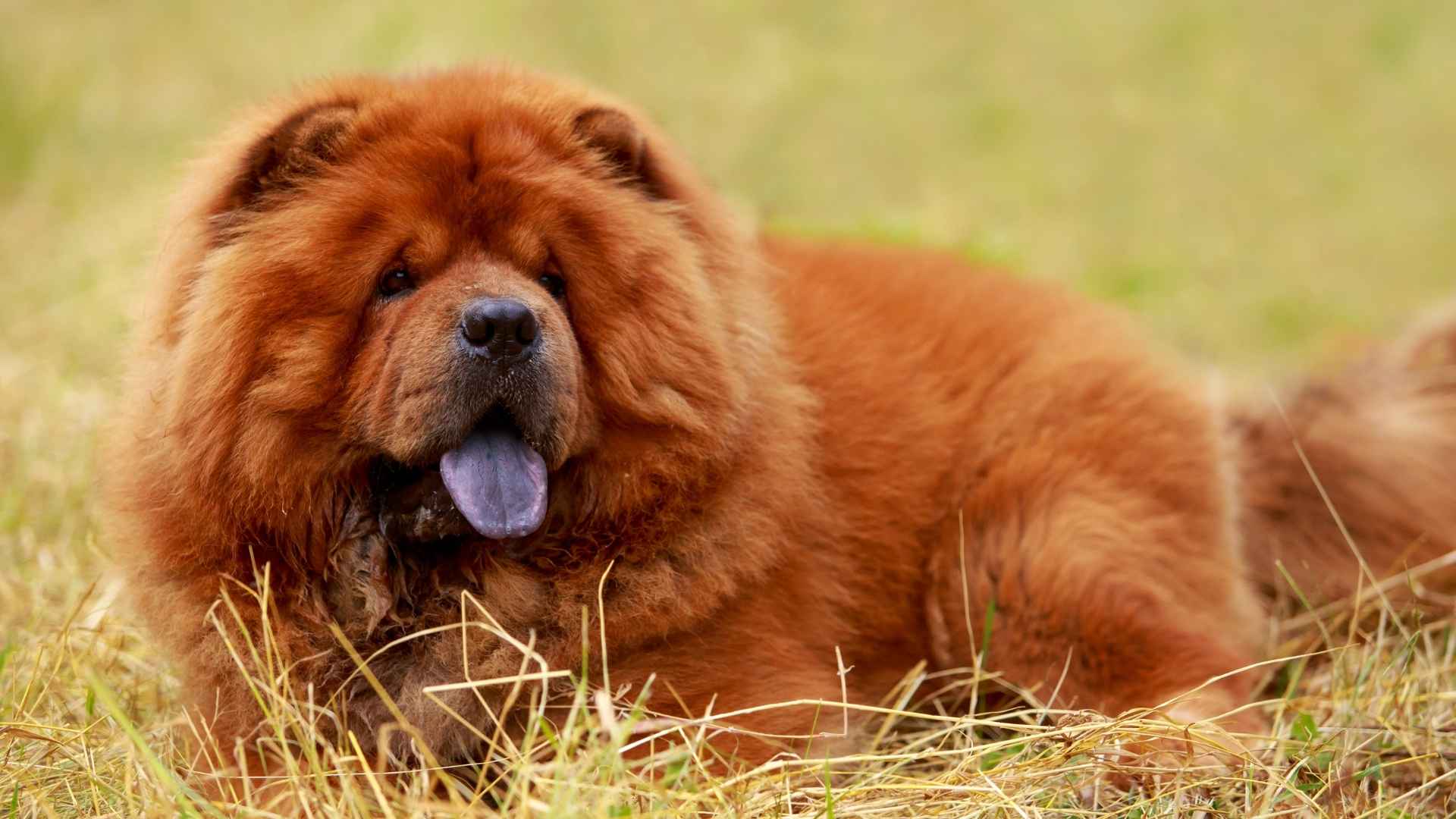When you think of a dog’s tongue, pink probably comes to mind. But did you know that some breeds actually sport tongues in striking shades of blue or blue-black? This unusual trait adds a unique twist to a dog’s appearance and often sparks curiosity among pet lovers. Though rare, these pigmented tongues are more than just a visual quirk—they can hint at a breed’s lineage and genetic heritage.
The American Kennel Club (AKC) officially recognizes over 200 dog breeds, and among them, about 20 may display some blue pigmentation on their tongues. However, only a handful possess a truly blue or blue-black tongue throughout. Other breeds may simply have pigmented spots or patches. These markings may seem mysterious, but selective breeding and genetic traits tied to a breed’s historic function and group classification likely play a role.
From ancient working dogs to majestic companion breeds, this article explores the fascinating list of dogs known for their surprising tongue color. Let’s dive into which breeds bear this unique and visually captivating trait.
Dog Breeds With Surprisingly Blue Tongues
1. Thai Ridgeback
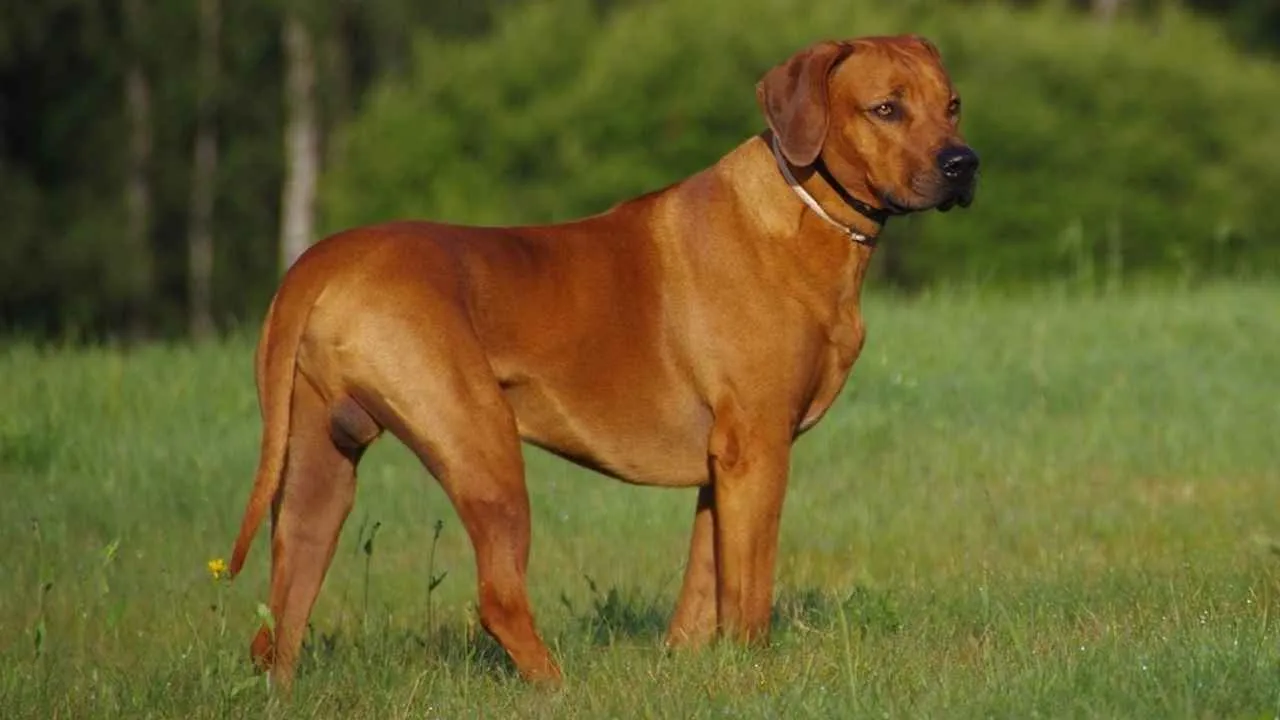
The Thai Ridgeback is a rare and ancient breed that hails from Thailand, historically employed as a multipurpose dog for guarding, hunting, and companionship. Known for its independence and strong-willed nature, this breed is both agile and athletic, making it suitable for active households.
Thai Ridgebacks are often compared to Rhodesian Ridgebacks due to their shared feature—a ridge of hair along the back growing opposite the rest of the coat. According to the AKC, the breed’s coat can come in solid blue, black, red, or fawn. Red-coated dogs may also have a distinctive black mask.
However, one of the most striking traits of the Thai Ridgeback is its solid blue or blue-spotted tongue, a characteristic it shares with only a few other dog breeds.
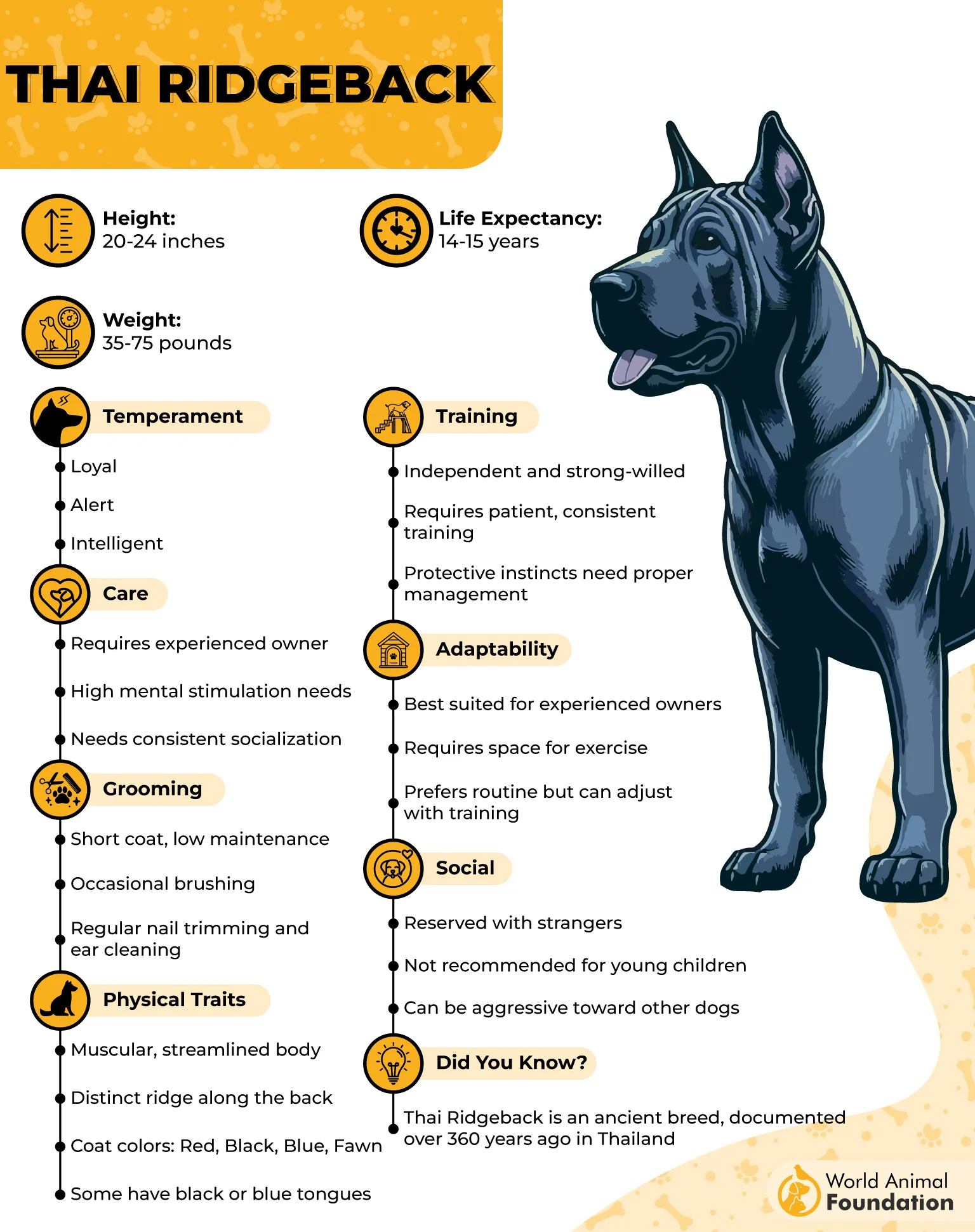
Appearance
The Thai Ridgeback is a medium to large-sized dog with a muscular, well-proportioned body and a sleek, short coat that lies close to the skin. Its defining features include a wedge-shaped head, erect ears, almond-shaped eyes, and a pronounced ridge running down its spine.
The breed’s powerful frame is complemented by a deep chest and strong limbs, creating an impression of elegance and strength. Coat colors include blue, black, red, and fawn.
Fun Fact: The Thai Ridgeback is the only breed on this list with an all-blue tongue besides the more widely known Chow Chow and Shar-Pei.
2. Rottweiler
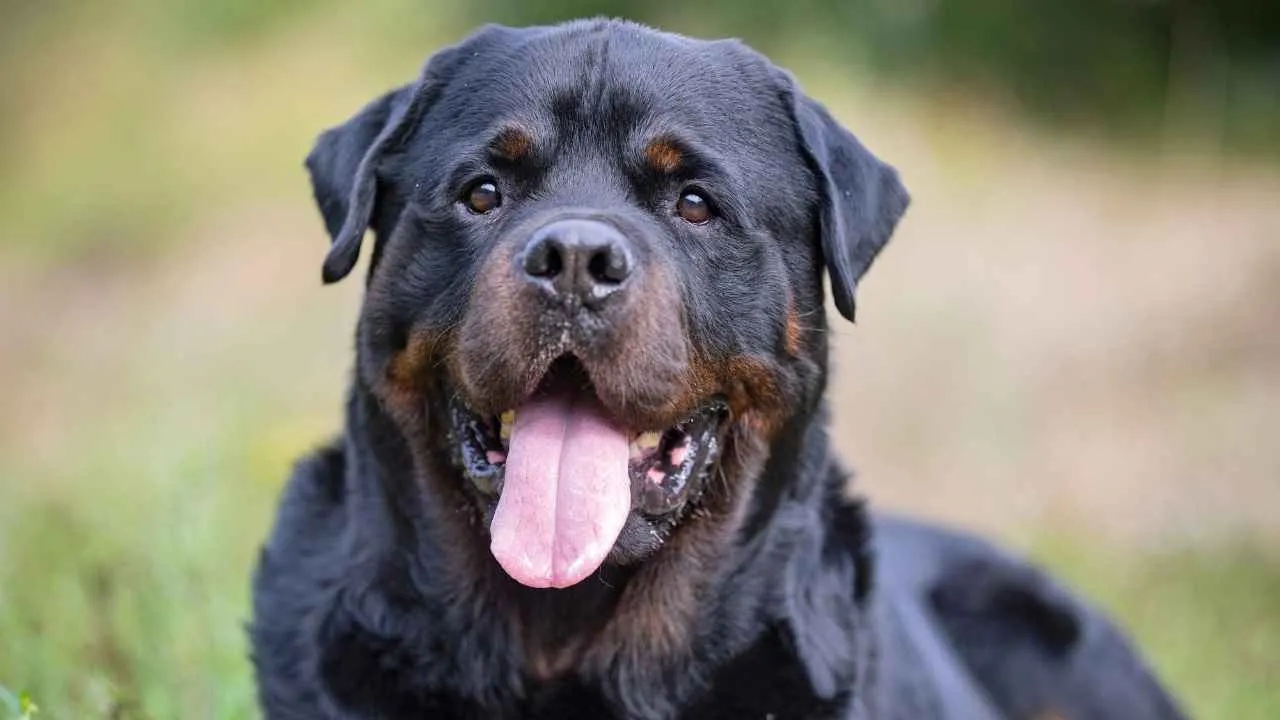
With origins tracing back to Roman drover dogs, the Rottweiler—often called a “Rottie”—evolved into a stalwart working breed in Rottweil, Germany. Traditionally used to drive cattle and guard butcher carts, this powerful canine is now a top choice for police, military, and service work. Rottweilers typically stand 22 to 27 inches tall and weigh between 90 and 110 pounds.
They belong to the Working Group and have a lifespan of 9 to 10 years. The PDSA states that Rottweilers are devoted and naturally protective dogs who can thrive in a family environment when properly trained and mentally stimulated. Their robust build, combined with a calm but confident demeanor, makes them loyal companions.
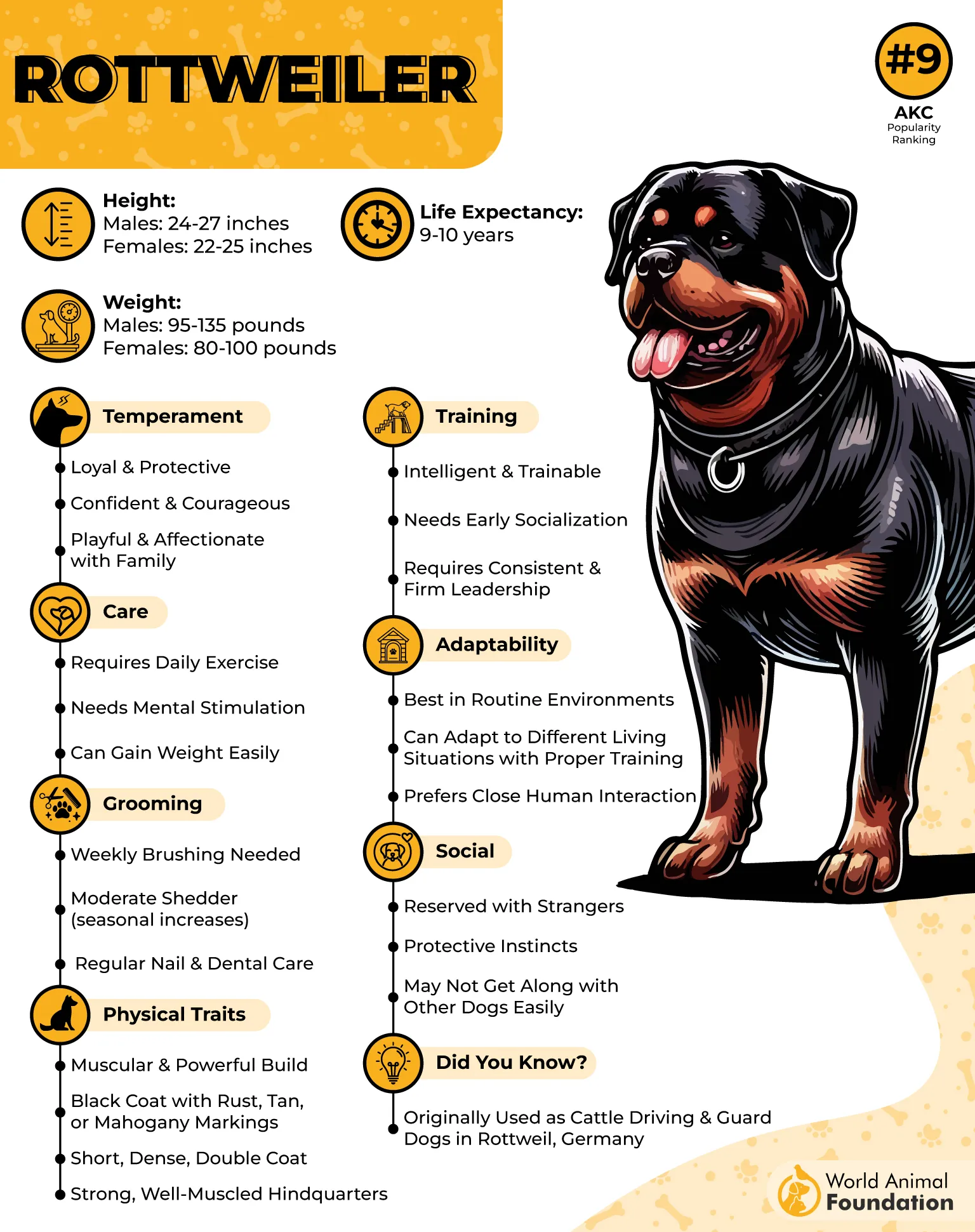
Appearance
The Rottweiler has a distinctive black coat with clearly defined rust markings on the face, chest, and legs. Their fur is short, dense, and coarse, giving them a sleek but rugged look. Their broad skull, muscular frame, and deep chest exude strength.
Some Rottweilers may show unique tongue pigmentation—bluish-black spots or even a full blue tongue—caused by concentrated melanin, which is purely cosmetic and not a health issue.
Fun Fact: Rottweilers once carried butchers’ money in a pouch around their neck, earning them the nickname “the Butcher’s Dog.”
3. Tibetan Mastiff
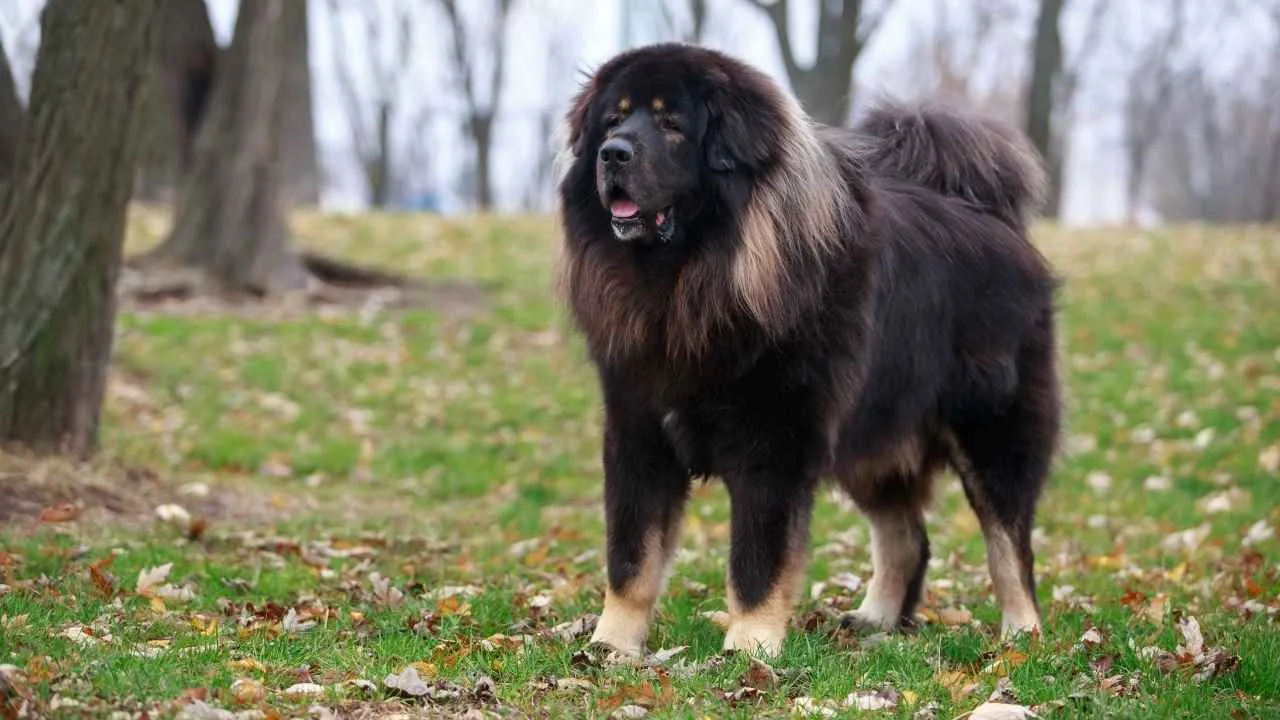
A majestic and ancient guardian breed, the Tibetan Mastiff hails from the Himalayas and was originally bred to protect monasteries and livestock from predators. WebMD states that Tibetan Mastiffs are a powerful dog breed, easily recognized by their impressive, lion-like mane.
Known for their independence and protective nature, these powerful canines are part of the working group and can weigh between 120 and 230 pounds, standing about 27.5 to 30 inches tall.
Their lifespan typically ranges from 6 to 10 years. Though not commonly recognized for solid blue tongues, Tibetan Mastiffs often display dark splotches or pigmentation, giving their large tongues a distinctive and surprising appearance.
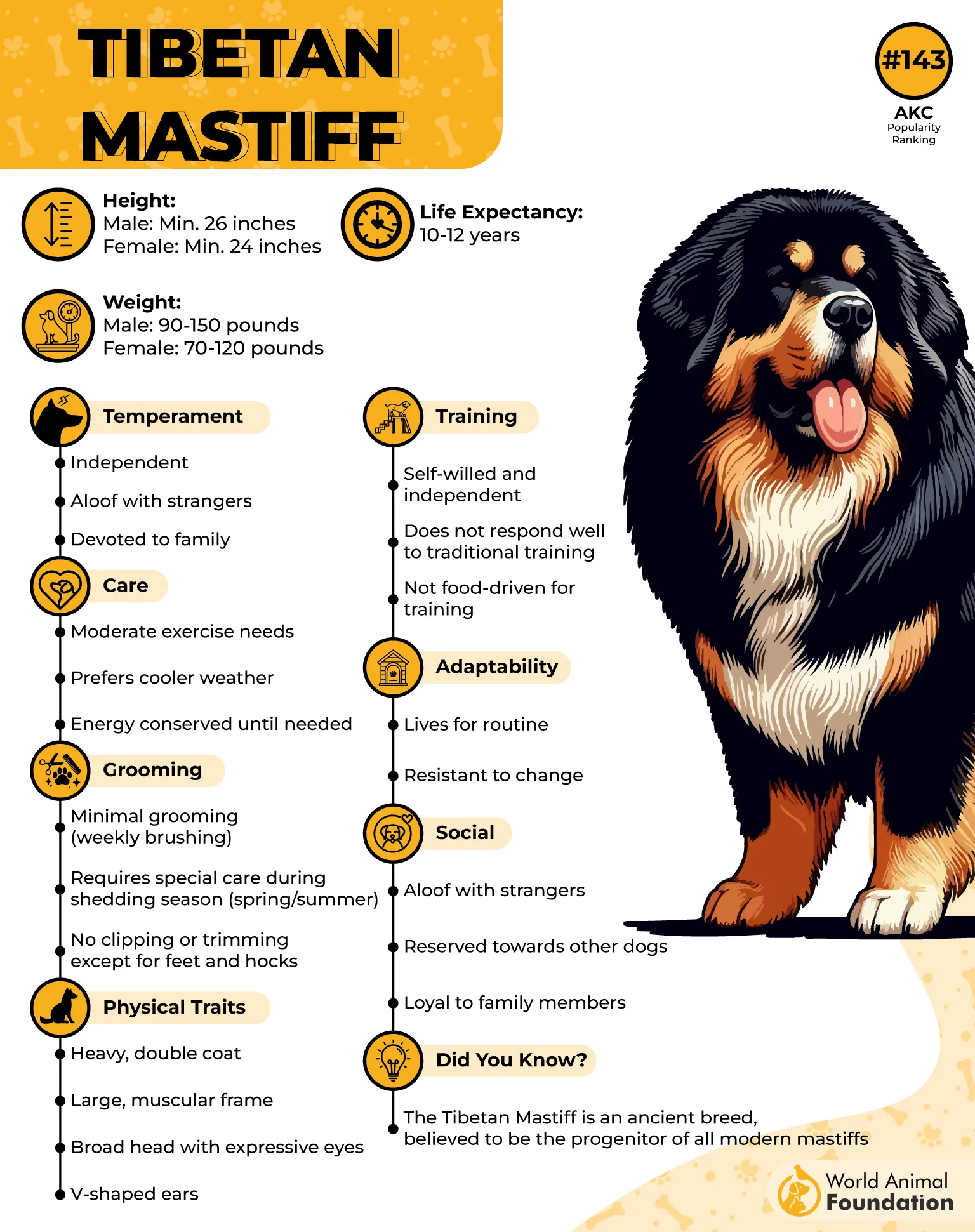
Appearance
The Tibetan Mastiff is a robust and noble dog with an athletic build and a solemn yet gentle expression. Their dense double coat, which comes in colors such as black, brown, and shades of gold, offers protection in harsh climates.
Their large, expressive eyes and broad head give them an imposing presence, while their tail curls over the back in typical spitz fashion. Their tongues, sometimes marked with dark spots or patches, add to their uniqueness—likely a trait inherited from ancient ancestors like the Chow Chow.
Fact: Tibetan Mastiffs have a tongue so large that the dark markings are especially noticeable, making them stand out even more.
4. Pomeranian
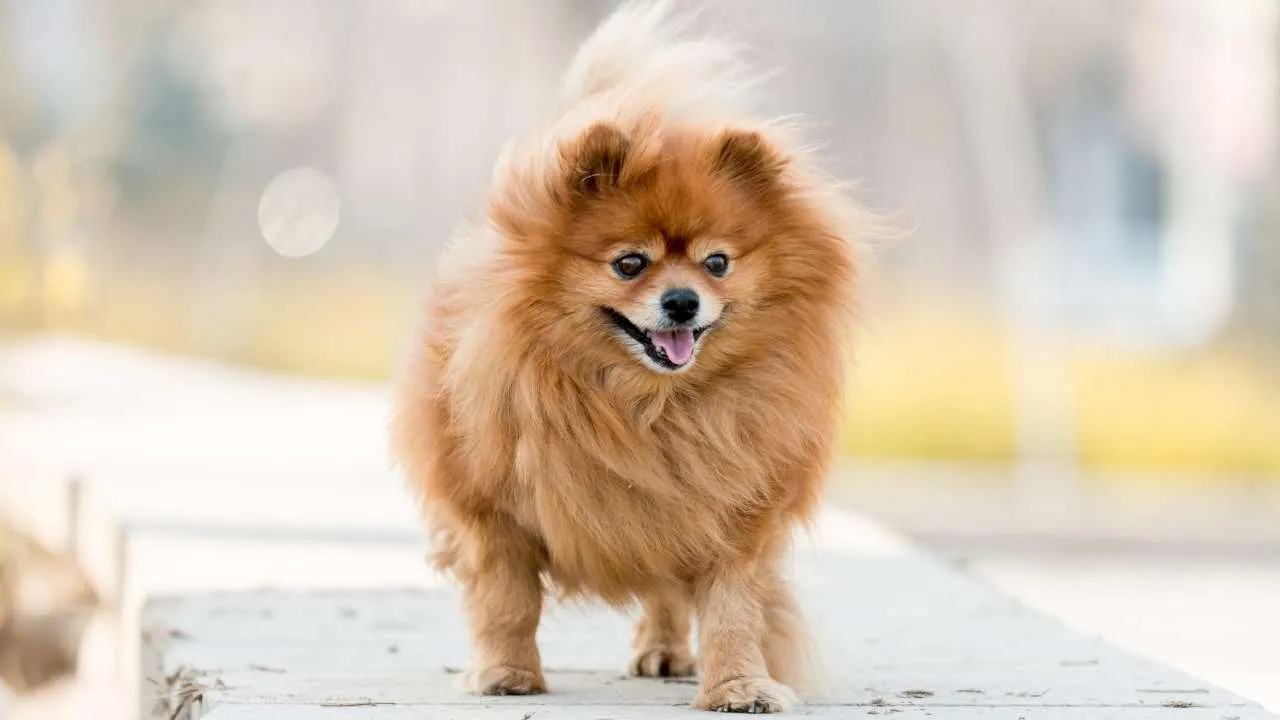
The Pomeranian, often referred to as “Pom” or “Zwergspitz,” is a spirited toy breed originating from the region of Pomerania. Bred down in size from larger sled-dog ancestors such as the Samoyed and Keeshond, these compact companions weigh just 3 to 7 pounds and stand about 6 to 7 inches tall.
Historically adored by royalty, including Queen Victoria, who helped popularize their smaller size, Pomeranians are known for their lively personality and fox-like expression. Despite their petite frame, they exhibit the confidence and alertness of a much larger watchdog. While they are generally healthy, they can live between 12 and 16 years with good care.
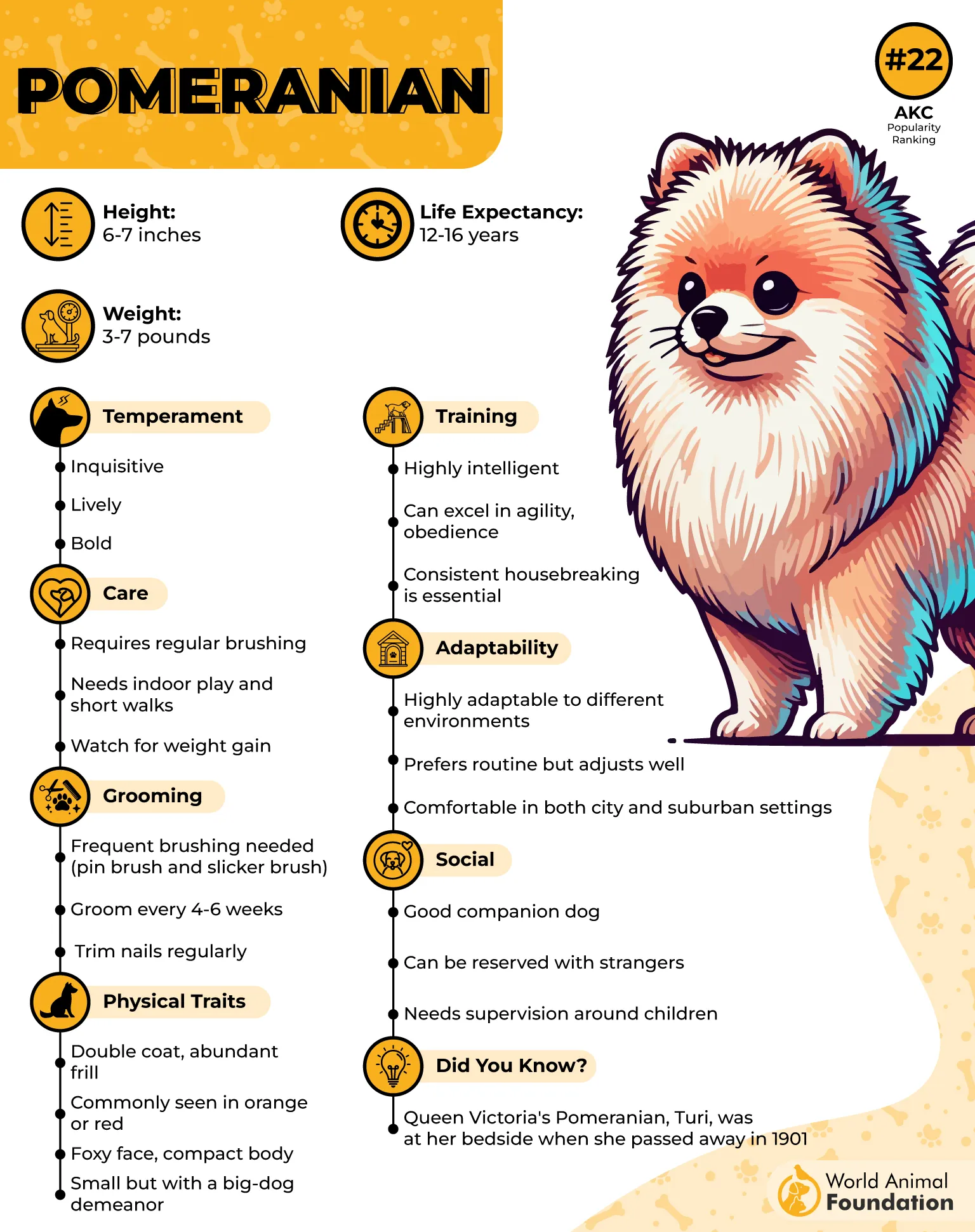
Appearance
Pomeranians boast a distinctive double coat, with a thick, fluffy ruff around the neck and shoulders. Their coats come in nearly two dozen color combinations, most commonly orange or red.
While pink is the standard tongue color, some Pomeranians may feature blue-black spots on their tongues—a rare trait that makes them stand out even more. These dogs also have small, erect ears and a full, plume-like tail curled over the back.
Fun Fact: Michelangelo reportedly had a Pomeranian by his side while painting the ceiling of the Sistine Chapel.
5. Newfoundland
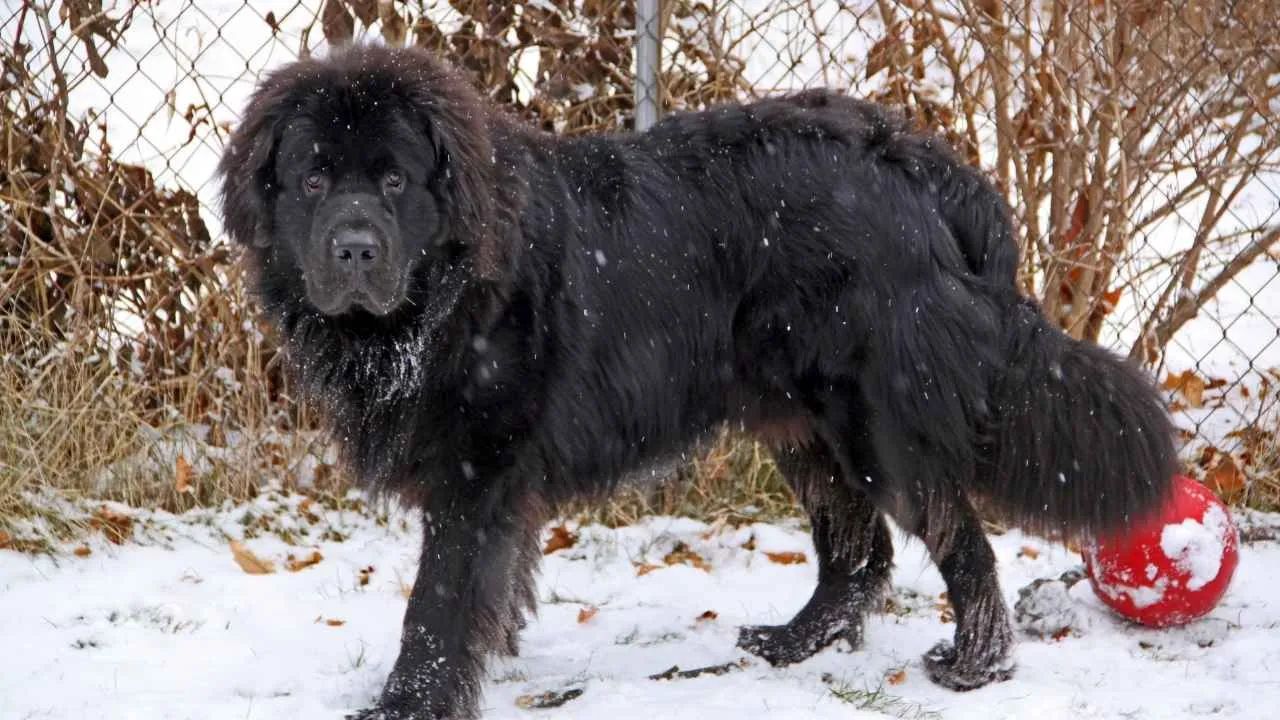
Known affectionately as the “gentle giant,” the Newfoundland hails from the rugged Canadian province of the same name. Bred originally to aid fishermen and perform water rescues, this working dog has evolved into a beloved family companion, famed for its strength, sweet disposition, and loyalty.
Male Newfoundlands can stand around 28 inches tall and weigh up to 150 pounds, while females are slightly smaller, ranging from 100 to 120 pounds.
These dogs often possess a noble appearance with soft, soulful eyes, and occasionally, they may have blue-black spots on their tongues—a trait linked to pigmentation and not exclusive to the Chow Chow.
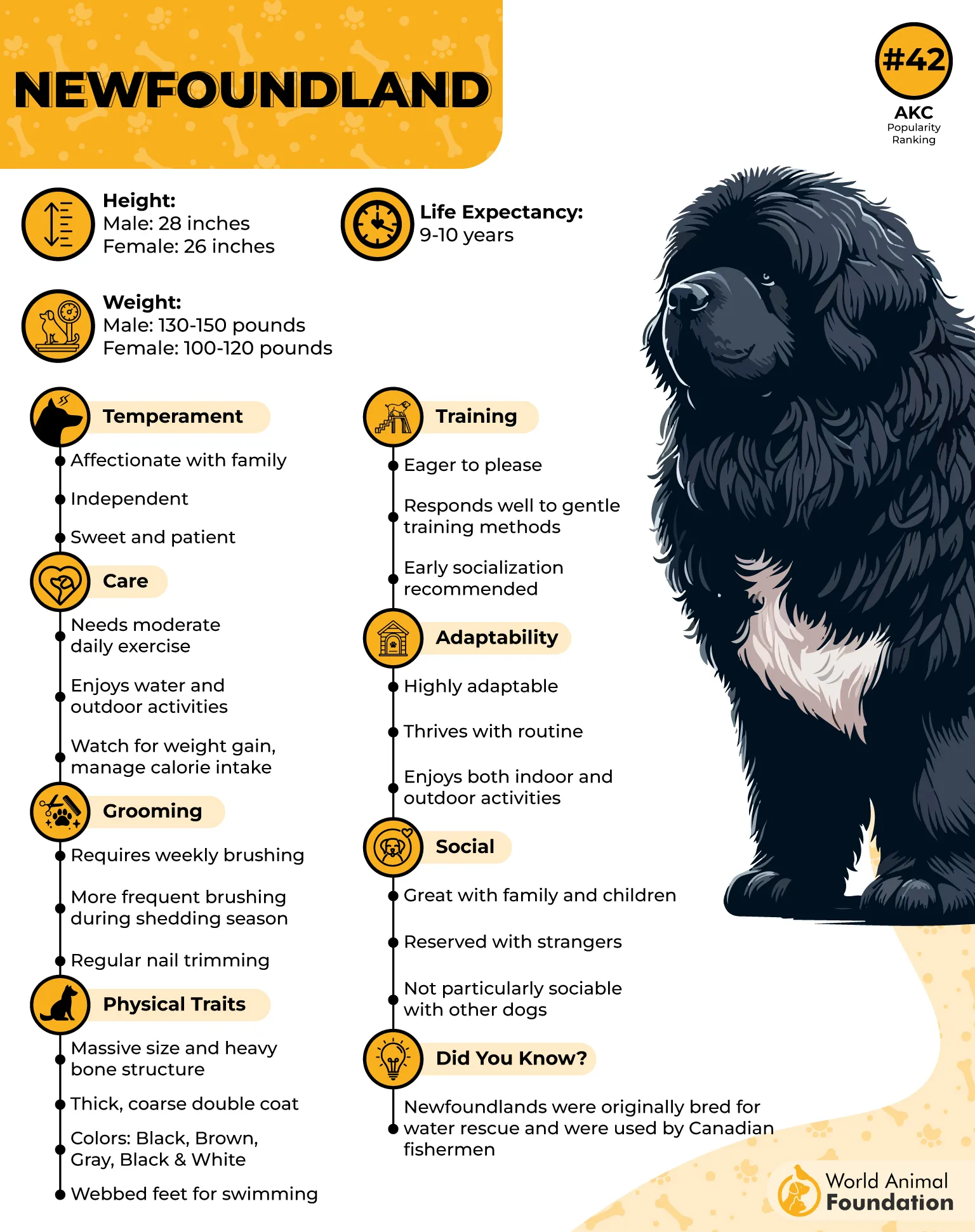
Appearance
Newfoundlands are heavily boned with a thick double coat that comes in black, brown, gray, or the iconic black-and-white Landseer pattern. Their outer coat is flat and coarse, built to repel water, while their webbed feet aid in swimming.
The combination of their size, build, and majestic presence makes them unmistakable among large breeds. Despite their bulk, they move with surprising grace. Their distinctive look includes a broad head, deep chest, and a muscular frame, which underscores their reputation as reliable working dogs.
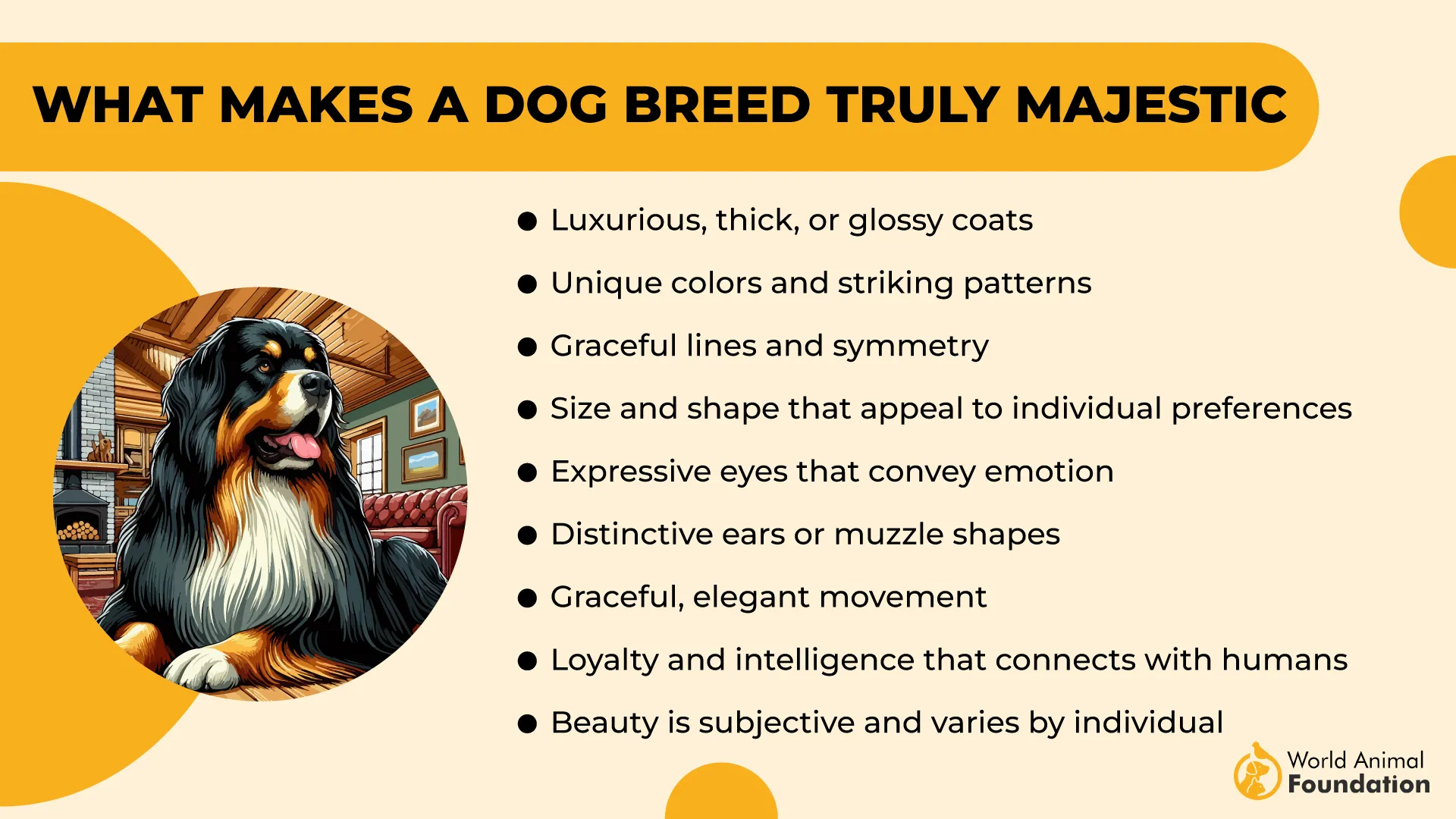
Fun Fact: Newfoundlands are natural swimmers, and their instinctive life-saving ability makes them one of the most renowned water rescue breeds in the world.
6. German Shepherd
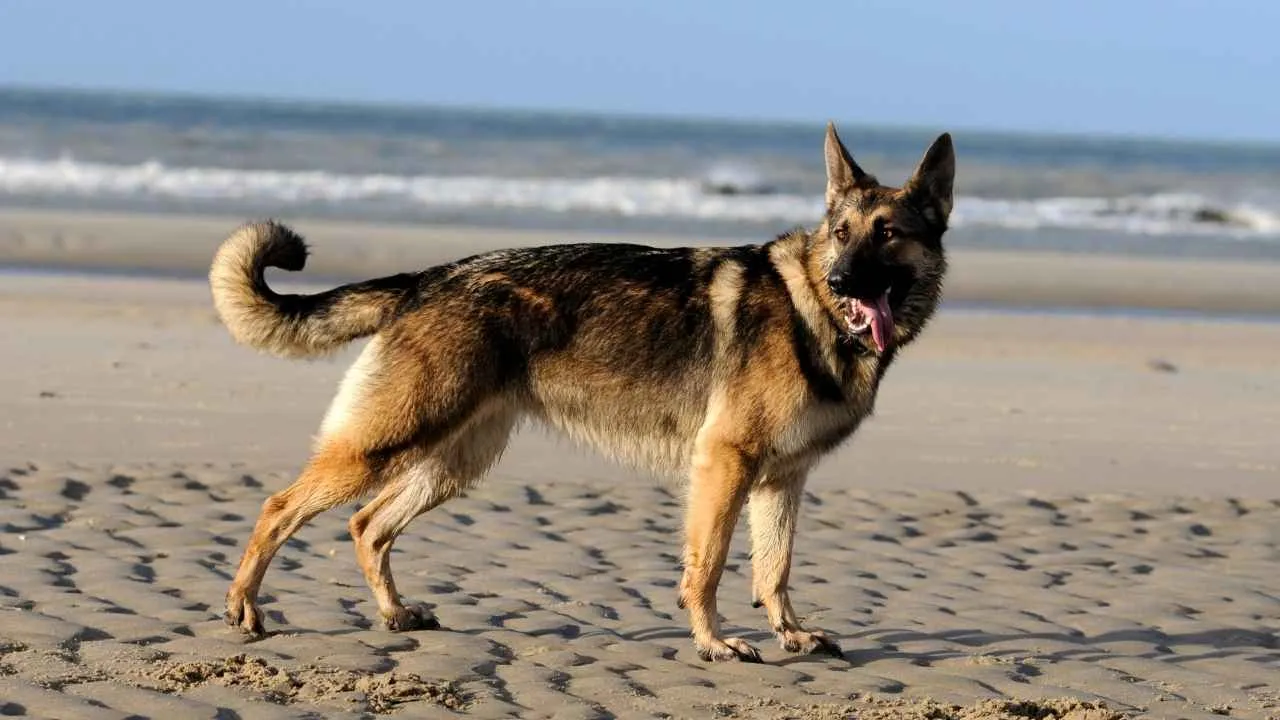
The German Shepherd, also known as the Alsatian, is one of the most iconic working dogs developed in Germany during the late 19th century. Originally bred from herding and farm dogs, it quickly became a versatile utility breed, excelling in police, military, and guide work.
German Shepherds are members of the Herding group and are admired for their intelligence, loyalty, and courage. They typically stand 22 to 26 inches tall at the withers and weigh between 50 to 90 pounds. With a life expectancy of 12–14 years, they are both powerful and agile, boasting a strong, slightly elongated build.
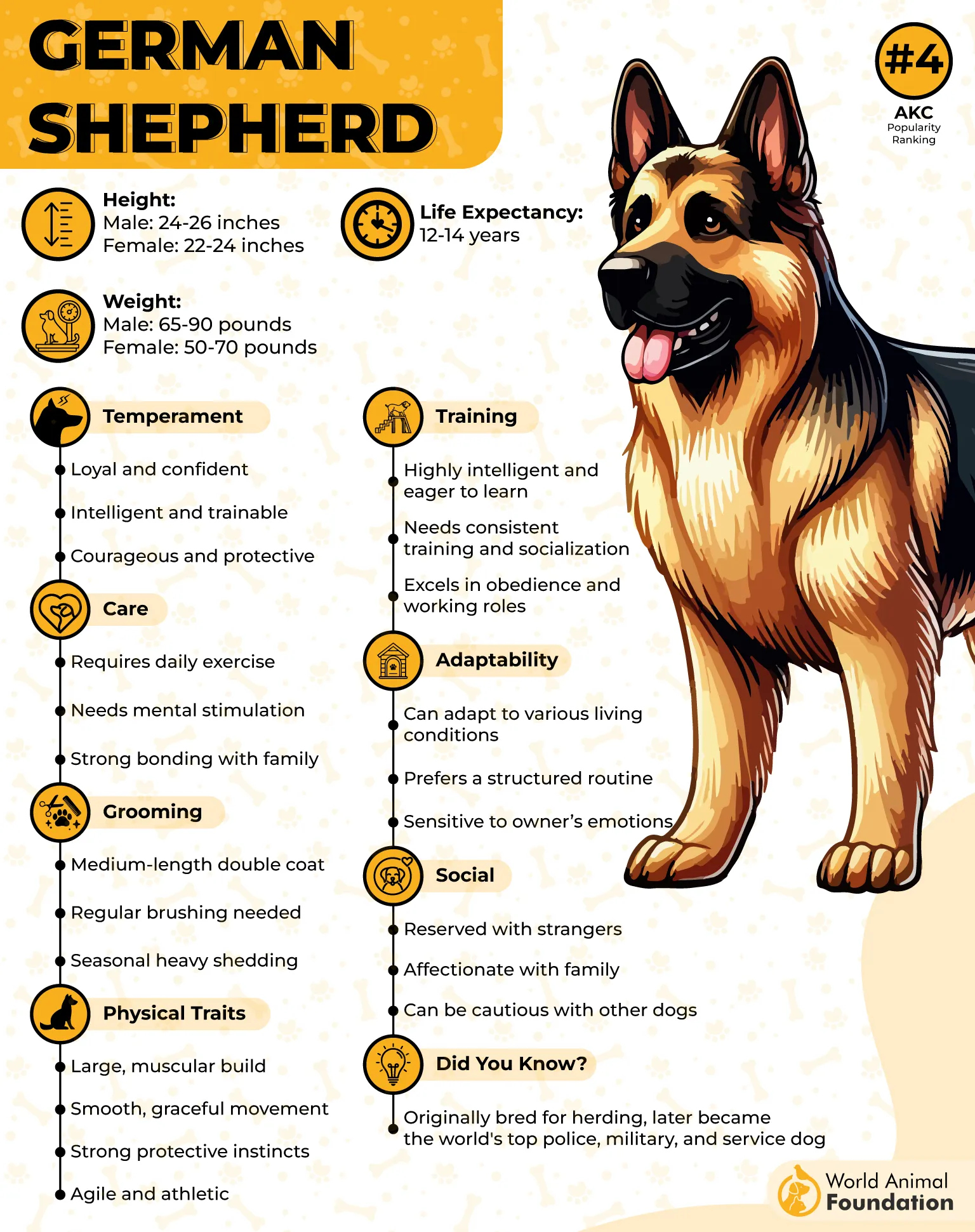
Appearance
German Shepherds are known for their balanced, muscular frame and confident bearing. Their outer coat is dense and straight or slightly wavy, ranging in color from black and tan to black and gray. Their deep chest, bushy tail, and noble profile add to their commanding presence.
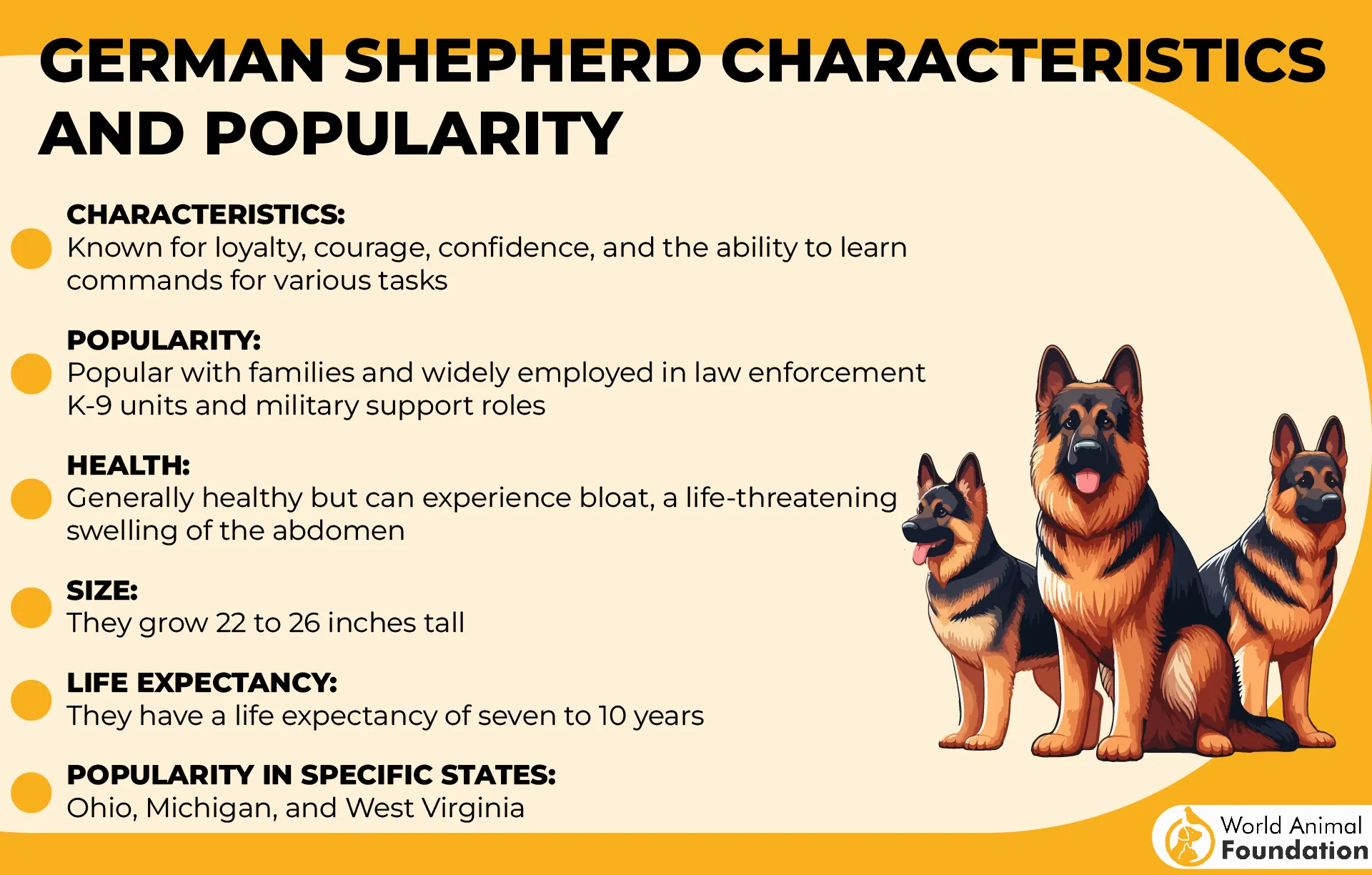
Interestingly, some German Shepherds may exhibit blue or bluish-black tongue spots due to concentrated pigmentation. While rare, these markings are harmless if present from birth. If they appear later in life, however, a vet should examine them.
Fun Fact: In 1990, a German Shepherd named Orient helped blind hiker Bill Irwin complete the Appalachian Trail, showcasing the breed’s loyalty and endurance.
7. Chow Chow
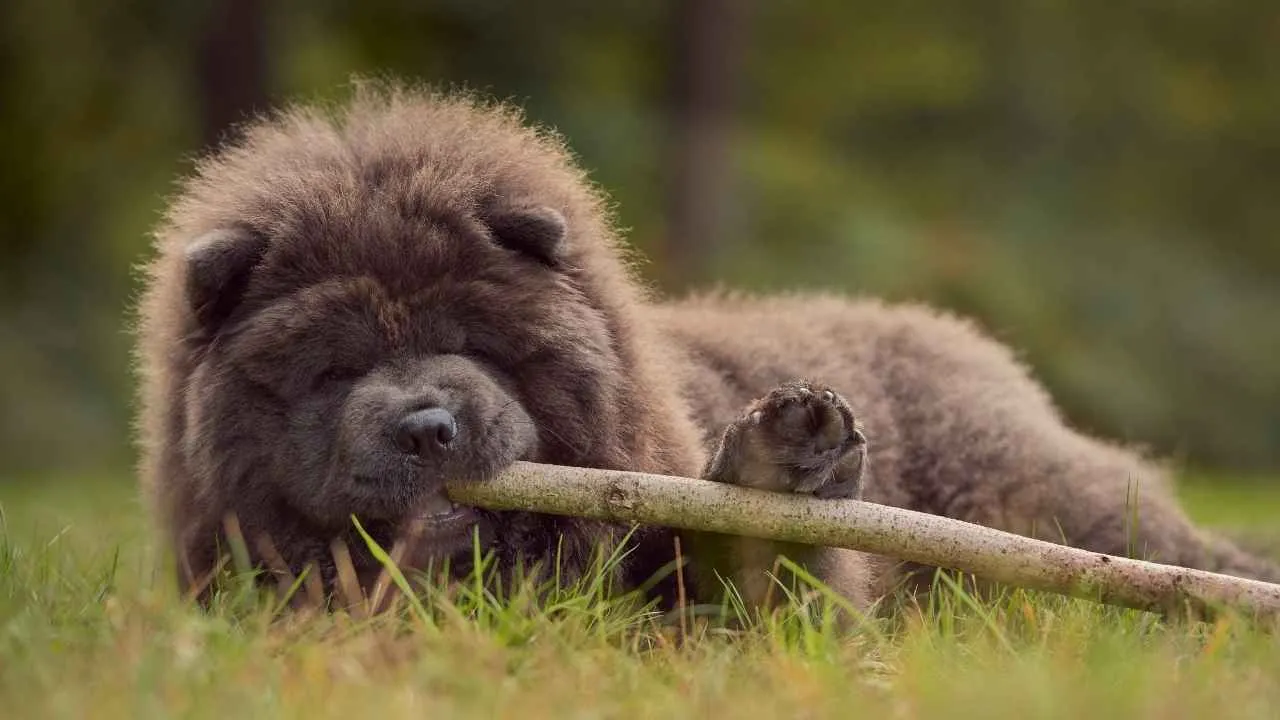
The Chow Chow, one of the most recognizable ancient breeds, hails from China and is renowned for its regal demeanor and distinctive features. Believed to date back to the Han dynasty, this breed was historically used for guarding, hunting, and even herding.
The Chow Chow stands between 17 to 20 inches tall and weighs 45 to 70 pounds, with a sturdy, square build. Its signature characteristics include a lion-like mane, deep-set almond-shaped eyes, a stiff-legged gait, and most notably, a blue-black tongue.
This unique tongue coloration is so essential to breed standards that any pink or red spotting is considered a fault. Known by nicknames like “Edible Dog,” the Chow also carries a complex history as both a companion anda working dog
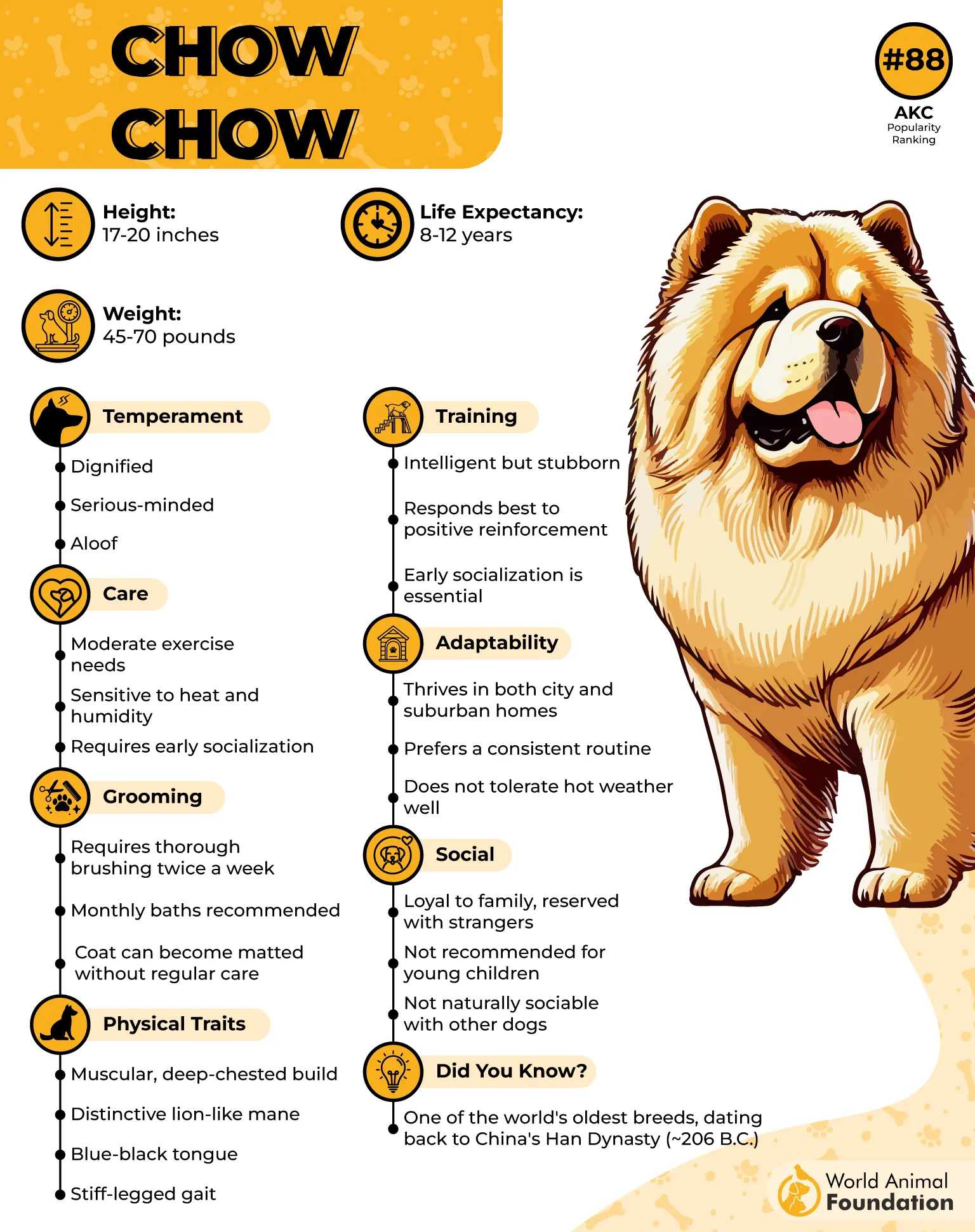
Appearance
The Chow’s plush double coat comes in shades such as red, cinnamon, cream, black, or blue. It may be either smooth or rough in texture, with a tail that elegantly curls over the back. Their aloof, almost cat-like cleanliness and scowling expression enhance their stately, dignified presence.
Fact: The Chow Chow’s genetics are closely linked to the wolf, and they were formally recognized by the American Kennel Club in 1903.
Conclusion
Dogs with blue or purple tongues are more than just visually unique—they often belong to some of the most ancient and storied lineages. From the noble German Shepherd with occasional blue tongue spots to other lesser-known breeds that showcase this rare trait, each carries its own fascinating genetic history. While many dogs sport pink tongues as the norm, the appearance of purple or blue pigmentation often reflects specific breed development and selective traits passed down through generations. This subtle detail adds another layer to the canine world’s diversity and charm.
Among these fascinating companions, some represent the oldest dog breeds, some have Chinese breed origins like the Chow Chow or Shar-Pei, which are more commonly known for their purple tongues. Whether a dog has a rough coat or a smooth coat, the tongue’s coloring can be a delightful surprise for owners and breed enthusiasts alike. These remarkable features make every dog breed distinct and worth celebrating for both their beauty and heritage.


